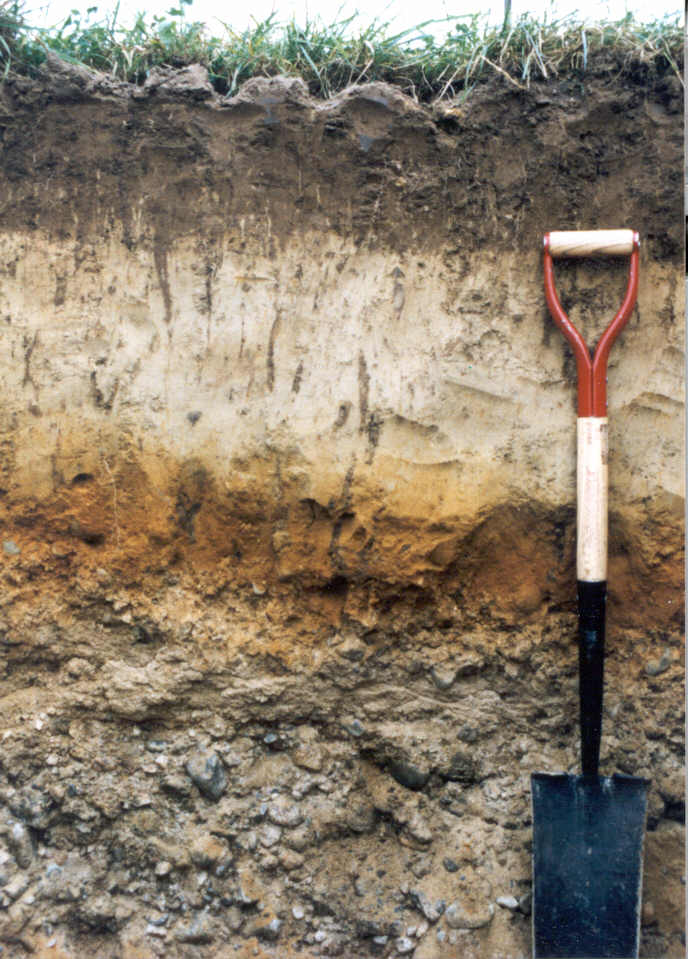Haven Series
Download soil profile locations for viewing with Google Earth (500 KB KMZ file, requires Google Earth to be installed).
New
England Soil Profiles
Haven Series
Download soil profile locations for viewing with
Google Earth
(500 KB KMZ file, requires
Google Earth to be installed).
![]() (Link to Site)
(Link to Site)


Photo by Jim Turenne. Location: Westport Vineyards, Massachusetts.
Haven soils are well drained soils formed in very fine sandy loam eolian (wind-blown deposit of silt and fine sand) material underlain by gravelly glacial fluvial or ice-contact deposits.
This profile shows some interesting soil morphology. The dark surface layer is an Ap horizon (topsoil), below the Ap is a light colored horizon (Bw or E?) which typically is a result of lack of iron oxide (the mineral in NE soils which give the subsoil a yellowish-brown color). Below the light colored subsoil is a bright iron-rich layer which is underlain by the gravelly coarse sand 2C substratum. The strongly contrasting particle size between the silty solum (A and B horizon) and the gravelly coarse sand 2C horizon causes a "hanging" watertable during periods of heavy rainfall. Once enough hydraulic head is present, the water is able to push through the interface and move rapidly through the outwash deposits. The bright layer is believed to be caused by iron precipitating out as it enters the oxygen rich material. Some of the soils with this type of morphology are recognized as having dual drainage classes such as well to moderately well drained.
There are two different interpretations on how to describe this type of soil morphology (other soil which commonly have this morphology are the Bridgehampton and Enfield series). One theory is that the light colored soil above the iron-rich layer is simply un-weathered geologic material and would be described as a C-horizon (unless it has soil structure). The other theory is that the light colored layer has had iron moved out of it and eluviated into the bright layer below, making the light layer an E-horizon and the bright layer a B's horizon.
Back to Images 1 | Back to Homepage